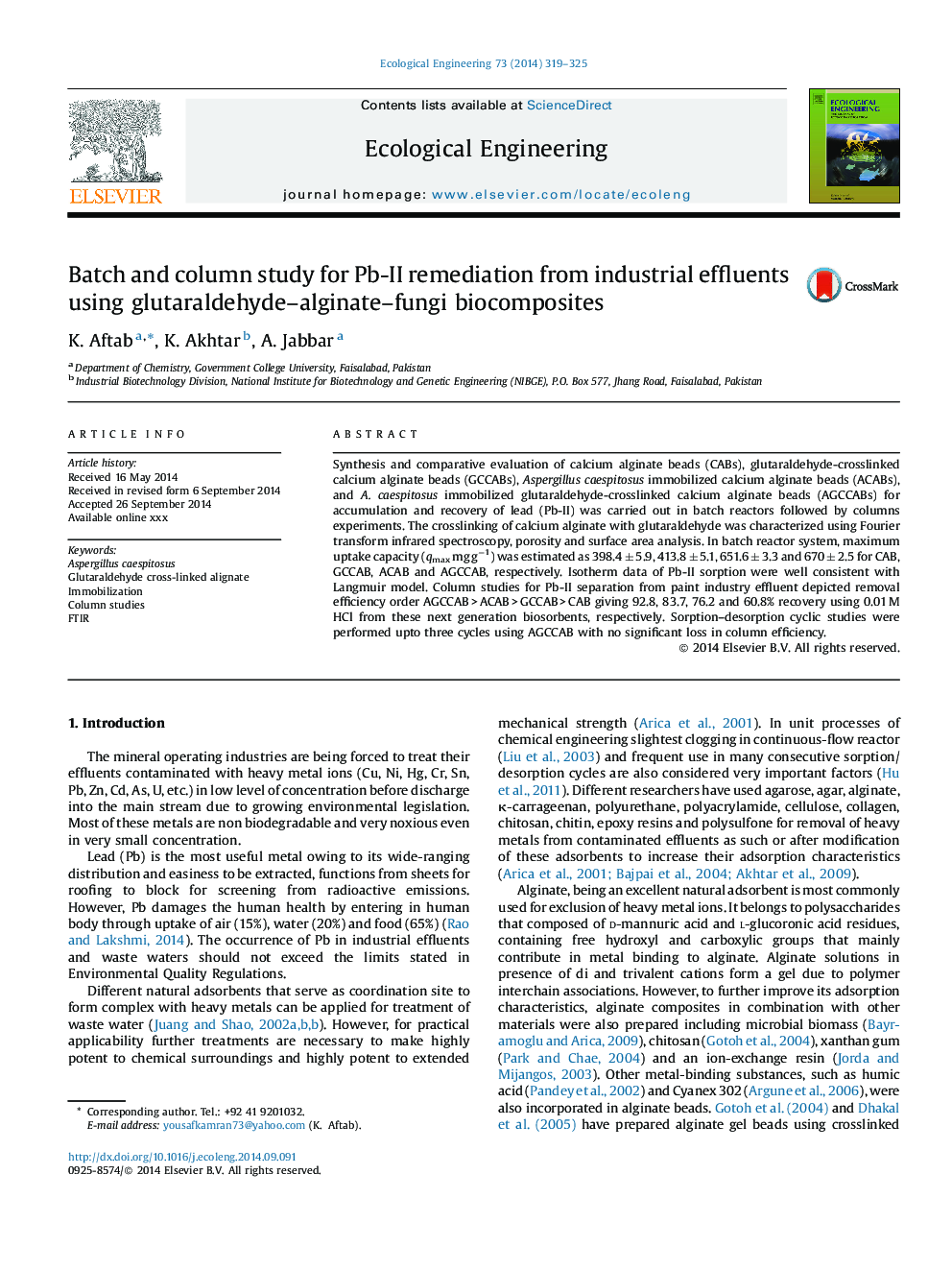| Article ID | Journal | Published Year | Pages | File Type |
|---|---|---|---|---|
| 6301937 | Ecological Engineering | 2014 | 7 Pages |
Abstract
Synthesis and comparative evaluation of calcium alginate beads (CABs), glutaraldehyde-crosslinked calcium alginate beads (GCCABs), Aspergillus caespitosus immobilized calcium alginate beads (ACABs), and A. caespitosus immobilized glutaraldehyde-crosslinked calcium alginate beads (AGCCABs) for accumulation and recovery of lead (Pb-II) was carried out in batch reactors followed by columns experiments. The crosslinking of calcium alginate with glutaraldehyde was characterized using Fourier transform infrared spectroscopy, porosity and surface area analysis. In batch reactor system, maximum uptake capacity (qmax mg gâ1) was estimated as 398.4 ± 5.9, 413.8 ± 5.1, 651.6 ± 3.3 and 670 ± 2.5 for CAB, GCCAB, ACAB and AGCCAB, respectively. Isotherm data of Pb-II sorption were well consistent with Langmuir model. Column studies for Pb-II separation from paint industry effluent depicted removal efficiency order AGCCAB > ACAB > GCCAB > CAB giving 92.8, 83.7, 76.2 and 60.8% recovery using 0.01 M HCl from these next generation biosorbents, respectively. Sorption-desorption cyclic studies were performed upto three cycles using AGCCAB with no significant loss in column efficiency.
Keywords
Related Topics
Life Sciences
Agricultural and Biological Sciences
Ecology, Evolution, Behavior and Systematics
Authors
K. Aftab, K. Akhtar, A. Jabbar,
